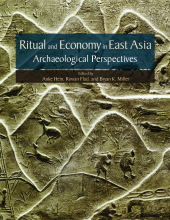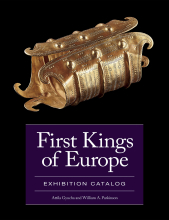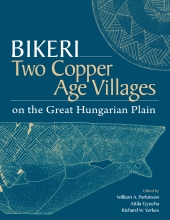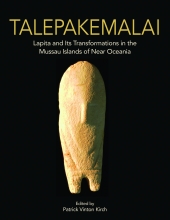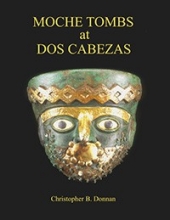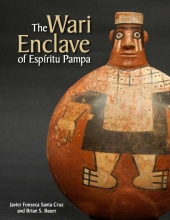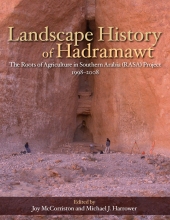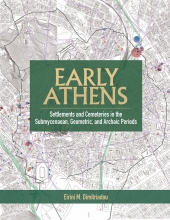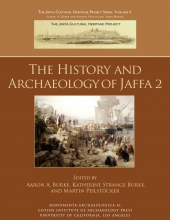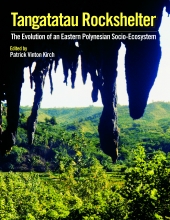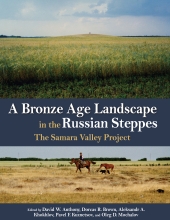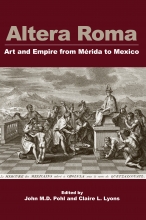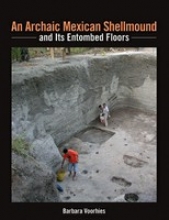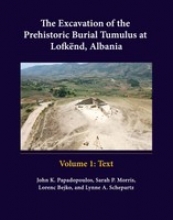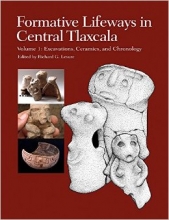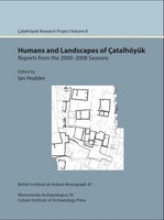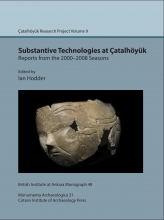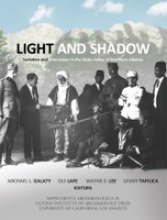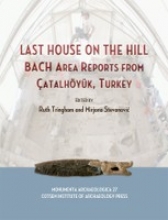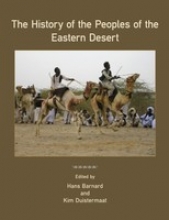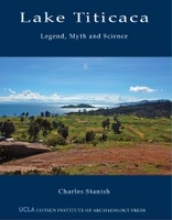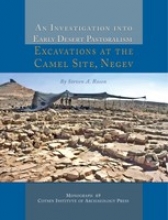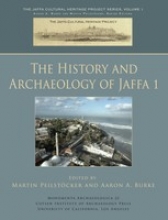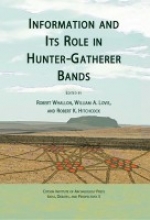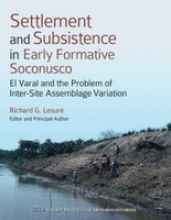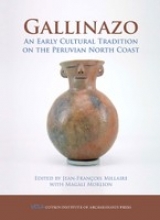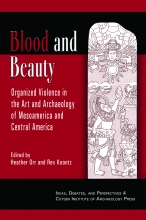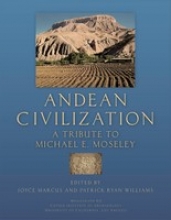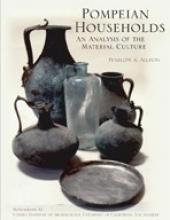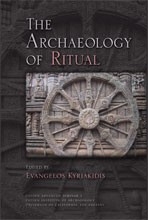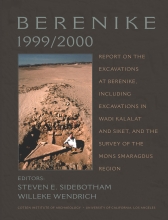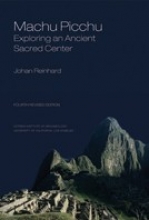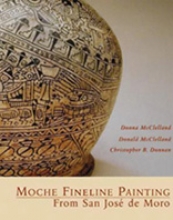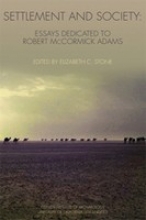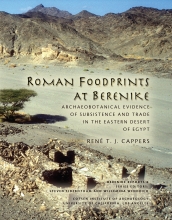Animals, Ancestors, and Ritual in Early Bronze Age Syria: An Elite Mortuary Complex from Umm el-Marra
This is a final report of the excavation of Tell Umm el-Marra in northern Syria, conducted in 1994--2010. It is likely the site of ancient Tuba, capital of a small kingdom in the Early and Middle Bronze periods, in the Jabbul plain between Aleppo and northern Mesopotamia.
Ritual and Economy in East Asia: Archaeological Perspectives
In commemoration of Lothar von Falkenhausen’s 60th birthday, this volume assembles eighteen scholarly essays that explore the intersection between art, economy, and ritual in ancient East Asia. The contributions are clustered into four themes: “Ritual Economy,” “Ritual and Sacrifice,” “Technology, Community, Interaction,” and “Objects and Meaning,” which collectively reflect the theoretical, methodological, and historical questions that Falkenhausen has been examining via his scholarship, research, and teaching throughout his career.
Archaeology Outside the Box
Archaeology Outside the Box is an examination of archaeology from some surprising and unexpected points of view by anthropologists, archaeologists, architects, and artists, including subjects as up to the minute as the Covid-19 pandemic and the Black Lives Matter movement, homelessness, and migration.
Ancient Methone 2003-2013 (2 Volumes)
Excavations at ancient Methone since 2003 by the Greek Ministry of Culture have uncovered remains from the Late Neolithic period through the fourth-century B.C. destruction by Philip II of Macedon.
First Kings of Europe: Exhibition Catalog
This catalog accompanies an international exhibition, "First Kings of Europe," and another volume, First Kings of Europe: From Farmers to Rulers in Prehistoric Southeastern Europe, that examine the artifacts and cultures of this area from the Neolithic to the Iron Age. Over several millennia, early agricultural villages gave rise to tribal kingdoms and monarchies, replacing smaller, more egalitarian social structures with complex state organizations led by royal individuals invested with power.
First Kings of Europe: From Farmers to Rulers in Prehistoric Southeastern Europe
Over several millennia, early agricultural villages in southeastern Europe gave rise to tribal kingdoms and monarchies, replacing smaller, more egalitarian social structures with complex state organizations led by royal individuals invested with power.
The Archaeology of Political Organization: Urbanism in Classic Period Veracruz, Mexico
In this volume, Barbara Stark examines settlement in the coastal plain of lowland Mesoamerica, which was richly endowed with fertile soil and valued tropical resources such as jaguars, cacao, avian species with bright plumage, and cotton.
Critical Archaeology in the Digital Age: Proceedings of the 12th IEMA Visiting Scholar’s Conference
Every part of archaeological practice is intimately tied to digital technologies, but how deeply do we really understand the ways these technologies impact the theoretical trends in archaeology, how these trends affect the adoption of these technologies, or how the use of technology alters our interactions with the human past?
Divine Consumption: Sacrifice, Alliance Building, and Making Ancestors in West Africa
Kirikongo is an archaeological site composed of thirteen remarkably well-preserved discrete mounds occupied continually from the early first to the mid-second millennium AD. It spans a dynamic era that saw the growth of large settlement communities and regional socio-political formations, development of economic specializations, intensification in interregional commercial networks, and the effects of the Black Death pandemic.
Bikeri: Two Copper Age Villages on the Great Hungarian Plain
The transition from the Neolithic period to the Copper Age in the northern Balkans and the Carpathian Basin was marked by significant changes in material culture, settlement layout and organization, and mortuary practices that indicate fundamental social transformations in the middle of the fifth millennium BC. Prior research into the Late Neolithic of the region focused almost exclusively on fortified 'tell' settlements. The Early Copper Age, by contrast, was known primarily from cemeteries such as the type site of Tiszapolgár-Basatanya.
Talepakemalai: Lapita and Its Transformations in the Mussau Islands of Near Oceania
The Lapita Cultural Complex—first uncovered in the mid-twentieth century as a widespread archaeological complex spanning both Melanesia and Western Polynesia—has subsequently become recognized as of fundamental importance to Oceanic prehistory. Notable for its highly distinctive, elaborate, dentate-stamped pottery, Lapita sites date to between 3500-2700 BP, spanning the geographic range from the Bismarck Archipelago to Tonga and Samoa.
Paso de la Amada: An Early Mesoamerican Ceremonial Center
Paso de la Amada, an archaeological site in the Soconusco region of the Pacific coast of Mexico, was among the earliest sedentary, ceramic-using villages of Mesoamerica. With an occupation that extended across 140 ha in 1600 BC, it was also one of the largest communities of its era.
Moche Tombs at Dos Cabezas
Moche civilization flourished on the north coast of Peru between approximately AD 100 and 800. Although the Moche had no writing system, they left a vivid artistic record of their beliefs and activities in beautifully modeled and painted Moche Tombsceramic vessels, remarkable objects of gold, silver, and copper, sumptuous textiles, and carved and inlaid bone, wood, and stone.
The Wari Enclave of Espíritu Pampa
The Wari State was the first expansionistic power to develop in the Andean highlands. Emerging in the area of modern Ayacucho (Peru) around AD 650, the Wari expanded to control much of the central Andes by the time of their collapse at AD 1000. This book describes the discovery and excavation (2010-2012) of a major new Wari site (Espíritu Pampa), located in the subtropical region of Vilcabamba (Department of Cusco).
Landscape History of Hadramawt
The rugged highlands of southern Yemen are one of the less archaeologically explored regions of the Near East. This final report of survey and excavations by the Roots of Agriculture in Southern Arabia (RASA) Project addresses the development of food production and human landscapes, topics of enduring interest as scholarly conceptualizations of the Anthropocene take shape.
Early Athens: Settlements and Cemeteries in the Submycenaean, Geometric, and Archaic Periods
This volume is one of the most important works on ancient Athens in the last fifty years. The focus is on the early city, from the end of the Bronze Age—ca. 1200 BCE—to the Archaic period, when Athens became the largest city of the Classical period.
Images in Action: The Southern Andean Iconographic Series
Emanating from a colloquium in pre-Columbian art and archaeology held at the University of Chile in Santiago, Images in Action presents interpretations of a large corpus of art and iconography from the Southern and South-Central Andes, bringing together some of the most esteemed scholars in the field.
Unmasking Ideology in Imperial and Colonial Archaeology: Vocabulary, Symbols, and Legacy
This volume addresses the entanglement between archaeology, imperialism, colonialism, capitalism, and war. Popular sentiment in the West has tended to embrace the adventure rather than ponder the legacy of archaeological explorers.
The History and Archaeology of Jaffa 2
Since 2007 the Jaffa Cultural Heritage Project, under the direction of Aaron A. Burke and Martin Peilstöcker, has endeavored to bring to light the vast archaeological and historical record of the site of Jaffa, Israel. Continuing the effort begun with The History and Archaeology of Jaffa 1, this volume represents a decade of fieldwork and analysis by the Jaffa Cultural Heritage Project and the publication of several projects begun earlier.
Life at Home in the Twenty-First Century: 32 Families Open Their Doors
Life at Home in the Twenty-First Century cross-cuts the ranks of important books on social history, consumerism, contemporary culture, the meaning of material culture, domestic architecture, and household ethnoarchaeology. Far richer in information and more incisive than America at Home (Smolan and Erwitt), this innovative book also moves well beyond Rick Smolan's Day in the Life series.
The Desert Fayum Reinvestigated
The Neolithic in Egypt is thought to have arrived via diffusion from an origin in southwest Asia. In this volume, the authors advocate an alternative approach to understanding the development of food production in Egypt based on the results of new fieldwork in the Fayum.
Tangatatau Rockshelter: The Evolution of an Eastern Polynesian Socio-Ecosystem
Tangatatau Rockshelter on Mangaia Island (Southern Cook Islands), excavated by a multi-disciplinary team in 1989-1991, produced one of the richest stratigraphic sequences of artifacts, faunal assemblages, and archaeobotanical materials in Eastern Polynesia. More than 70 radiocarbon dates provide a tight chronology from AD 1000 to European contact (ca. 1800).
Art: Authenticity, Restoration, Forgery
This book presents a detailed account of authenticity in the visual arts from the Palaeolithic to the postmodern. The restoration of works of art can alter the perception of authenticity, and may result in the creation of fakes and forgeries. These interactions set the stage for the subject of this book, which initially examines the conservation perspective, then continues with a detailed discussion of notions of authenticity, and the philosophical background.
A Bronze Age Landscape in the Russian Steppes: The Samara Valley Project
The first English-language monograph that describes seasonal and permanent Late Bronze Age settlements in the Russian steppes, this is the final report of the Samara Valley Project, a U.S.-Russian archaeological investigation conducted between 1995 and 2002.
Altera Roma: Art and Empire from Mérida to Mexico
Altera Roma explores the confrontation of two cultures—European and Amerindian—and two empires—Spanish and Aztec. In an age of exploration and conquest, Spanish soldiers, missionaries, and merchants brought an array of cultural preconceptions.
The Archaeology of Grotta Scaloria: Ritual in Neolithic Southeast Italy
Scaloria Cave, Grotta Scaloria, is in Apulia, where the Tavoliere Plain rises to meet the Gargano peninsula. Hundreds of villages were located there during the Neolithic period, the villagi trincerati first identified from aerial photographs taken by the British RAF during WW II. Certainly some of these Neolithic villagers of the Tavoliere visited Scaloria Cave, for refuge from the elements, and for the mysterious rituals held in both the Lower and Upper Chambers.
Icon, Cult, and Context: Sacred Spaces and Objects in the Classical World
This festschrift honors UCLA professor emerita Susan Downey and her meticulous scholarship on religious architecture and imagery in the Roman/Hellenistic world. The iconography of gods and goddesses, the analysis of sacred imagery in the context of ancient cult practices, and the design and decoration of sacred spaces are the main themes of the book.
Vilcabamba and the Archaeology of Inca Resistance
The sites of Vitcos and Espíritu Pampa are two of the most important Inca cities within the remote Vilcabamba region of Peru.
Rural Archaeology in Early Urban Northern Mesopotamia: Excavations at Tell al-Raqa’i
This book presents a new perspective on the emergence of urban societies in Mesopotamia, focusing attention on life in a rural village and helping to correct the traditional bias by archaeologists toward the urban and the elite. Reporting on the extensive excavations at Tell al-Raqa’i (early-middle 3rd millennium BC) in upper Mesopotamia/Syria, the authors offer detailed studies on architecture, pottery, animal bones, plant remains, and other varieties of artifacts and ecofacts
An Archaic Mexican Shellmound and Its Entombed Floors
Tlacuachero is the site of an Archaic-period shellmound located in the wetlands of the outer coast of southwest Mexico. This book presents investigations of several floors that are within the site's shell deposits that formed over a 600-800 year interval during the Archaic period (ca. 8000-2000 BCE), a crucial timespan in Mesoamerican prehistory when people were transitioning from full-blown dependency on wild resources to the use of domesticated crops.
The Excavation of the Prehistoric Burial Tumulus at Lofkënd, Albania [2-vol set]
The burial tumulus of Lofkënd lies in one of the richest archaeological areas of Albania (ancient Illyria) home to a number of burial tumuli spanning the Bronze and Iron Ages of later European prehistory. Modern understanding of the pre- and protohistory of Illyria has largely been shaped by the contents of such burial mounds, yet some were robbed long ago, others reused for modern burials, and few were excavated under scientific conditions.
New Insights into the Iron Age Archaeology of Edom, Southern Jordan [2-vol set]
Situated south of the Dead Sea, near the famous Nabataean capital of Petra, the Faynan region in Jordan contains the largest deposits of copper ore in the southern Levant. The Edom Lowlands Regional Archaeology Project (ELRAP) takes an anthropological archaeology approach to the deep-time study of culture change in one of the Old World’s most important locales for studying technological Scarabdevelopment.
Integrating Çatalhöyük: Themes from the 2000-2008 Seasons, Volume 10
This volume discusses general themes that have emerged in interpretation of the results of the 2000–2008 excavations, synthesizing the results of research described in other volumes in the same series.
Archaeology of the Chinese Bronze Age: From Erlitou to Anyang
Archaeology of the Chinese Bronze Age is a synthesis of recent Chinese archaeological work on the second millennium BCE-the period associated with China’s first dynasties and East Asia’s first “states.” With a focus Chinese Bronze Ageon early China’s great metropolitan centers in the Central Plains and their hinterlands, this work attempts to contextualize them within their wider zones of interaction from the Yangtze to the edge of the Mongolian steppe, and from the Yellow Sea to the Tibetan plateau and the Gansu corridor.
Formative Lifeways in Central Tlaxcala Vol. 1: Excavations, Ceramics, and Chronology
The transition to the Formative in the relatively high-altitude study region of Tlaxcala, Mexico is later than it was in choice regions for early agriculture elsewhere in Mesoamerica. From 900 BCE, however, population growth and sociopolitical development were rapid. A central claim in the research presented here is that a macroregional perspective is essential for understanding the local Formative sequence.
Çatalhöyük Excavations: The 2000-2008 Seasons, Volume 7
Çatalhöyük Excavations presents the results of the excavations that took place at the site from 2000 to 2008 when the main aim was to understand the social geography of the settlement, its layout, and social organization. Excavation, recording, and sampling methodologies are discussed as well as dating, “levels,” and the grouping of buildings into social sectors.
Visions of Tiwanaku
“What was Tiwanaku?” This question was posed to a select group of scholars that gathered for an intensive two-day conference at the Cotsen Institute of Archaeology at UCLA. For over half a millennium, the megalithic ruins in the highlands of the Andes mountains have stood as proxy for the desires and ambitions of various empires and political agendas; in the last hundred years, scholars have attempted to answer this question by interpreting the shattered remains from a distant preliterate past.
Humans and Landscapes of Çatalhöyük: Reports from the 2000-2008 Seasons, Volume 8
The Neolithic site of Çatalhöyük in Turkey has been world famous since the 1960s, when excavations revealed the large size and dense occupation of the settlement, as well as the spectacular wall paintings and reliefs uncovered inside the houses. Since 1993, an international team of archaeologists, led by Ian Hodder, has been carrying out new excavations and research, in order toshed more light on the people who inhabited the site.
Substantive Technologies at Çatalhöyük: Reports from the 2000-2008 Seasons, Volume 9
The ways in which humans became increasingly engaged in their material environment, such that “things” came to play an active force in their lives, is the subject of this volume in the Çatalhöyük series. The alluvial clays surrounding the site were extremely important in this dynamic involvement. In the absence of local stone, humans extracted and manipulated clay for a wide range of purposes, for the manufacture of bricks, ovens, pots, and figurines.
Advances in Titicaca Basin Archaeology-2
This volume, the second in a series of studies on the archaeology of the Titicaca Basin, serves as an excellent springboard for broader discussions of the roles of ritual, authority, coercion, and the intensification of resources and trade for the development of archaic states worldwide. Over the last hundred years, scholars have painstakingly pieced together fragments of the incredible cultural history of the Titicaca Basin, an area that encompasses over 50,000 square kilometers, achieving a basic understanding of settlement patterns and chronology.
Empires and Diversity: On the Crossroads of Archaeology, Anthropology, and History
For more than four thousand years, empires have been geographically the largest polities on Earth, shaping in many respects the human past and present in different epochsand on different continents.
Light and Shadow: Isolation and Interaction in the Shala Valley of Northern Albania
There are few places in Europe as remote as the Shala Valley of northern Albania. The inhabitants appear lost in time, cut off from the outside world, a people apart. But this careful interdisciplinary study of their past and way of life tells a very different tale, overturning much of what we thought we knew about Shala and “persistent” peoples everywhere.
Stones of Tiahuanaco: A Study of Architecture and Construction
The remains of the artful gateways, platforms, walls, and sculpture at Tiahuanaco, an important Middle Horizon site at the southern end of Lake Titicaca in Bolivia, have for centuries sparked what has seemed like unanswerable questions about how they were made.
Classic Maya Political Ecology: Resource Management, Class Histories, and Political Change in Northwestern Belize
The Classic Maya of the Central Lowlands crafted one of the ancient world’s great civilizations in what is today Belize, northern Guatemala, and Yucatan, Mexico. Although the Maya have long been known for their artistic and architectural achievements, the economic and agricultural base of this society has received far less attention.
The Dead Tell Tales: Essays in Honor of Jane E. Buikstra
Honoring Jane Buikstra’s pioneering work in the development of archaeobiological research, the essays in this volume stem from a symposium held at an annual meeting of the Society for American Archaeology. Buikstra’s redefinition of the term “bioarchaeology” to focus specifically on human skeletal data in historical and anthropological contexts, and the impact of her mentorship on developing scholars in the field, are acknowledged and celebrated by the wide-ranging contributions in The Dead Tell Tales.
Rock Art at Little Lake: An Ancient Crossroads in the California Desert
The product of ten years of fieldwork at Little Lake Ranch in the Rose Valley, the southern gateway to the Owens Valley, this book presents the results of intensive rock art analyses carried out by the interdisciplinary research team of the UCLA Rock Art Archive.
Last House on the Hill: BACH Area Reports from Çatalhöyük, Turkey
Occupied from around 7500 BC to 5700 BC, the large Neolithic and Chalcolithic settlement of Çatalhöyük in Anatolia is composed entirely of domestic buildings; no public buildings have been identified. First excavated in the early 1960s, the site was left untouched until 1993.
History of the Peoples of the Eastern Desert
The last quarter century has seen extensive research on the ports of the Red Sea coast of Egypt, the road systems connecting them to the Nile, and the mines and quarries in the region.
The Construction of Value in the Ancient World
Scholars from Aristotle to Marx and beyond have been fascinated by the question of what constitutes value. The Construction of Value in the Ancient World makes a significant contribution to this ongoing inquiry, bringing together in one comprehensive volume the perspectives of leading anthropologists, archaeologists, historians, linguists, philologists, and sociologists on how value was created, defined, and expressed in a number of ancient societies around the world.
Lake Titicaca: Legend, Myth and Science
Lake Titicaca and the vast region surrounding this deep body of water contain mysteries that we are just beginning to unravel. The area surrounding the world’s highest navigable lake was home to some of the greatest civilizations in the Lake Titicacaancient world. These civilizations were created by the ancestors of the Aymara and Quechua peoples who continue to live and work in Peru and Bolivia along the shores of this ancient body of water.
Crucible of Pueblos: The Early Pueblo Period in the Northern Southwest
Archaeologists are increasingly recognizing the early Pueblo period as a major social and demographic transition in Southwest history. In Crucible of Pueblos: The Early Pueblo Period in the Northern Southwest, Richard Wilshusen, Gregson Schachner and James Allison present the first comprehensive summary of population growth and migration, the materialization of early villages, cultural diversity, relations of social power, and the emergence of early great houses during the early Pueblo period.
Chotuna and Chornancap: Excavating an Ancient Peruvian Legend
Christopher Donnan's Chotuna and Chornancap: Excavating an Ancient Peruvian Legend, explores one of the most intriguing oral histories passed down among ancient Peruvians: the legend of Naymlap, the founder of a dynasty that Chotuna and Chornancapruled the Lambayeque Valley of northern Peru centuries before European contact.
Exploring Methods of Faunal Analysis: Insights from California Archaeology
How does the practice of archaeology benefit from faunal analysis? Michael Glassow and Terry Joslin's Exploring Methods of Faunal Analysis: Insights from California Archaeology addresses this question.
Archaeology 2.0: New Approaches to Communication and Collaboration
How is the Web transforming the professional practice of archaeology? And as archaeologists accustomed to dealing with “deep time,” how can we best understand the possibilities and limitations of the Web in meeting the specialized needs of professionals in this field?
Investigation Into Early Desert Pastoralism
Negev focuses on two primary purposes, one theoretical/methodological and the second substantive. Briefly stated, the book comprises a case study of excavations at an early (ca. 2800 B.C.) pastoral site in the Negev, providing detailed analyses and a synthetic overview of a seasonal encampment from this early period in the evolution of desert pastoral societies.
History and Archaeology of Jaffa 1
In 2007 the Jaffa Cultural Heritage Project (JCHP) was established as a joint research endeavor of the Israel Antiquities Authority and the Cotsen Institute of Archaeology at the University of California, Los Angeles.
Information and Its Role in Hunter-Gatherer Bands
Information and Its Role in Hunter-Gatherer Bands explores the question of how information, broadly conceived, is acquired, stored, circulated, and utilized in small-scale hunter-gatherer societies, or bands. Given the nature of this question, the volume brings together a group of scholars from multiple disciplines, including archaeology, ethnography, linguistics, and evolutionary ecology.
Inca Rituals and Sacred Mountains: A Study of the World’s Highest Archaeological Sites
The Incas carried out some of the most dramatic ceremonies known to us from ancient times. Groups of people walked hundreds of miles across arid and mountainous terrain to perform them on mountains over 20,000 feet high. The most important offerings made during these pilgrimages involved human sacrifices (capacochas).
The Chanka
In AD 1438 a battle took place outside the city of Cuzco that changed the course of South American history. The Chanka, a powerful ethnic group from the Andahuaylas region, had begun an aggressive program of expansion. Conquering a host of smaller polities, their army had advanced well inside the territory of their traditional rival, the Inca.
Settlement and Subsistence at Early Formative Soconusco: El Varal and the Problem of Inter-Site Assemblage Variation
The Soconusco region, a narrow strip of the Pacific coast of Mexico and Guatemala, is the location of some of the earliest pottery-using villages of ancient Mesoamerica. Mobile early inhabitants of the area harvested marsh clams in the estuaries, leaving behind vast mounds of shell. With the introduction of pottery and the establishment of permanent villages (from 1900 B.C.), use of the resource-rich estuary changed. The archaeological manifestation of that new estuary adaptation is a dramatic pattern of inter-site variability in pottery vessel forms.
Gallinazo: An Early Cultural Tradition on the Peruvian North Coast
Over the last decades, considerable effort has been directed towards the study of early complex societies of northern Peru, and in recent years archaeologists have expressed a strong interest in the art and archaeology of the Moche, Lambayeque and Chimú societies.
Blood and Beauty: Organized Violence in the Art and Archaeology of Mesoamerica and Central America
Warfare, ritual human sacrifice, and the rubber ballgame are the traditional practices through which scholars have most often examined organized violence in the artistic and material records of ancient Mesoamerica and Central America.
Andean Civilization: A Tribute to Michael E. Moseley
This volume brings together exciting new field data by more than two dozen Andean scholars who came together to honor their friend, colleague, and mentor, Michael E. Moseley. These new studies cover the enormous temporal span of Moseley’s own work from the Preceramic era to the Tiwanaku and Moche states to the Inka empire.
South American Camelids
One of the most significant differences between the New World’s major areas of high culture is that Mesoamerica had no beasts of burden and wool, while the Andes had both. Four members of the camelid family—wild guanacos and vicuñas, and domestic llamas and alpacas—were native to the Andes.
Pompeian Households: An Analysis of Material Culture
Studies of Pompeian material culture have traditionally been dominated by art historical approaches, but recently there has been a renewed and burgeoning interest in Pompeian houses for studies of Roman domestic behavior.
Archaeology of Mobility
A majority of laymen, politicians and scholars consciously or subconsciously understand settled living as the highest rung on the evolutionary ladder. Accounts of people surviving and even thriving in peripheral areas are often instrumental to construct and maintain the dichotomy between 'the desert and the sown.'
Excavations at Cerro Azul, Peru: The Architecture and Pottery
During the Late Intermediate period (AD 1100-1470), the lower Cañete Valley of Peru was controlled by the walled Kingdom of Huarco. While inland sites produced irrigated crops, the seaside community of Cerro Azul, 130 km south of Lima, produced fish for the rest of the kingdom.
Chavín: Art, Architecture, and Culture
This book is the first in more than a decade to provide new information on the Chavín phenomenon of ancient Peru. Thought by some to be the "Mother Culture" of ancient Peruvian cultures, Chavín is remarkable for its baroque, sophisticated art style in a variety of media, including finely carved stone monuments, beautifully formed pottery, and magnificent and complex metallurgy.
Rethinking Mycenaean Palaces II: Revised and Expanded Second Edition
This revised and expanded edition of the classic 1999 edited book includes all the chapters from the original volume plus a new, updated, introduction and several new chapters. The current book is an up-to-date review of research into Mycenaean palatial systems with chapters by archaeologists and Linear B specialists that will be useful to scholars, instructors, and advanced students.
Moche Tombs at Dos Cabezas
Moche civilization flourished on the north coast of Peru between approximately AD 100 and 800. Although the Moche had no writing system, they left a vivid artistic record of their beliefs and activities in beautifully modeled and painted Moche Tombsceramic vessels, remarkable objects of gold, silver, and copper, sumptuous textiles, and carved and inlaid bone, wood, and stone.
The Archaeology of Ritual
This book is the fruit of the third Cotsen Advanced Seminar conducted at the Cotsen Institute of Archaeology at UCLA. A wide spectrum of scholars, historians, art historians, anthropologists, students of performance Archaeology of Ritualand of religion, archaeologists, cognitive scientists, and linguists were all asked to think and comment on how ritual can be traced in archaeology and on possible directions for ritual research in the discipline.
Berenike 1999/2000
Excavations at Berenike, a Greco-Roman harbor on the Egyptian Red Sea coast, have provided extensive evidence for trade with India, South-Arabia and sub-Saharan Africa.
Machu Picchu: Exploring an Ancient Sacred Center
Machu Picchu, voted one of the New Wonders of the World, is one of the world’s most famous archaeological sites, yet it remains a mystery. Even the most basic questions are still unanswered: What was its meaning and why was it built in such a difficult location?
Early Iron Age Cemetery at Torone [2-vol. set]
This volume publishes the excavation and analysis of the Early Iron Age cemetery at Torone in Chalkidike, in the north Aegean, Greece. Spanning the period between the twelfth or eleventh century down to ca. 850 BC, the cemetery represents one of the few burial grounds of the period in Greece to have been excavated virtually in its entirety (yielding 134 tombs, of which 118 were cremations and 16 inhumations).
Moche Fineline Painting From San José De Moro
Moche civilization flourished on the north coast of Peru from AD 200 to 800. Although the Moche had no writing system, they left a vivid artistic record of their beliefs and activities on intricately painted ceramic vessels, several thousand of which are scattered in museums and private collections throughout the world today.
Archaeology and Historical Ecology of Late Holocene San Miguel Island
California’s northern Channel Islands have one of the longest and best-preserved archaeological records in the Americas, spanning some 13,000 calendar years. When European explorers first traveled to the area, these islands were inhabited by the Chumash, some of the most populous and culturally complex hunter-gatherers known.
Kasapata and the Archaic Period of the Cuzco Valley
Although the Cuzco Valley of Peru is renowned for being the heartland of the Incas, little is known concerning its pre-Inca inhabitants. Until recently it was widely believed that the first inhabitants of the Cuzco Valley were farmers who lived in scattered villages along the valley floor (ca. 1000 BC) and that there were no Archaic Period remains in the region.
Settlement and Society: Essays Dedicated to Robert McCormick Adams
This volume of essays dedicated to Robert McCormick Adams reflects both the breadth of his research and the select themes upon which he focused his attention. These essays written by his students and disciples focus on issues in Near Eastern archaeology but range as far afield as the Indus Valley and Mesoamerica.
Chinese Society in the Age of Confucius
The Late Bronze Age (ca. 1000-250 BC) was a crucial period during which the Chinese Classics came into being and famous thinkers such as Confucius (ca. 551-479 BC) laid the intellectual foundations of traditional Chinese civilization. Complementing and often challenging the surviving writings, Lothar von Falkenhausen develops a self-consciously archaeological perspective on the social conditions in this time.
Roman Foodprints at Berenike: Archaeobotanical Evidence of Subsistence and Trade in the Eastern Desert of Egypt
During the Graeco-Roman period, Berenike served as a gateway to the outside world together with Myos Hormos. Commodities were imported from Africa south of the Sahara, Arabia, and India into the Greek and Roman Empire, the importance of both harbors evidenced by several contemporary sources.
Agricultural Strategies
This volume brings together a diverse set of new studies--archaeological, ethnohistoric, and ethnographic—that focus on agricultural intensification and hydraulic systems around the world.
Settlement, Subsistence and Social Complexity: Essays Honoring the Legacy of Jeffrey R. Parsons
This volume brings together the work of some of the most prominent archaeologists to document the impact of Jeffrey R. Parsons on contemporary archaeological method and theory.
Us and Them: Archaeology and Ethnicity in the Andes
This volume brings together a corpus of scholars whose work collectively represents a significant advancement in the study of prehistoric ethnicity in the Andean region.
Advances in Titicaca Basin Archaeology-1
Advances in Titicaca Basin Archaeology-I is the first in a series of edited volumes that reports on recent research in the south central Andes. Volume I contains 18 chapters that cover the entire range of human settlement in the region, from the Early Archaic to the early Colonial Period.



